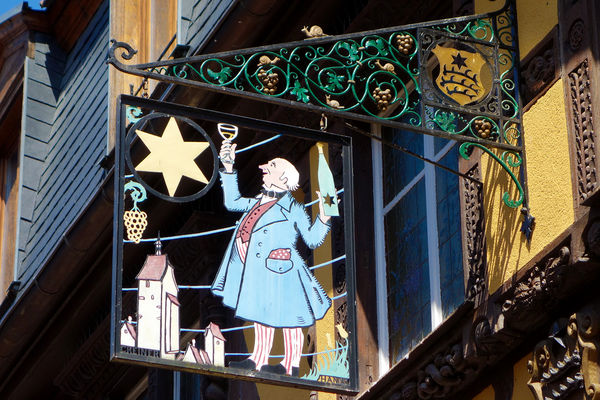Alsace Blends the Best of France and Germany
By Rick Steves

France's easternmost region, Alsace, is also one of its most enchanting — thanks largely to its location. Pressed up against the German border, along the Rhine, the region flip-flopped between Germany and France for centuries. (The Germans considered the Vosges Mountains, east of the Rhine, to be the natural border, while the French thought the river made a better border.)
The region still represents a cultural continental divide, creating a fascinating mix of the best aspects of French and Germanic culture. Its cozy fairytale villages have kept their Germanic gemütlichkeit while offering distinctly French-quality cuisine. Alsace is home to endless vineyards, ruined castles, one of France's most inviting cities (Strasbourg), and plenty of people with names like "Jacques Schmidt" or "Gunter Dubois."
My favorite town in the region, Colmar, is one of the most delightful in all of Europe. I absolutely love Colmar. Historic beauty was usually no excuse for being spared the ravages of World War II, but it worked for Colmar. The American and British military were careful not to bomb the old burghers' colorful half-timbered houses, pitched red- and green-tiled roofs, and cobbled lanes.
On a visit here you'll enjoy great cuisine, lovely white wine, and a proud heritage. Each Tuesday in summer, folk dancers and musicians share their talents on the town's main square — a fun and free slice of Alsatian culture.
Colmar also has incredible art. The Unterlinden Museum holds Matthias Grünewald's circa-1515 Isenheim Altarpiece — one of the most powerful paintings ever produced. The altarpiece is a mind-blowing polyptych (a many-paneled painting on hinges) that was designed to help people in a medieval hospital endure horrible skin diseases long before the age of painkillers. The painting tells Jesus' story — from Annunciation to Resurrection — and patients who meditated on it were reminded that they didn't have it so bad.
It's easy to tour the region, and Colmar makes a good springboard. Alsace's Route du Vin (wine road) is blanketed with lush vineyards and dotted with delicious, picture-perfect little towns. You can drive, hike, bike, hire a taxi, catch the bus, or join a minibus tour like I did on one visit. Alsatian villages nestle in valleys on small rivers, which medieval villagers broke into canals and used to power their mills.
Kaysersberg is one of the most charming stops along the Route du Vin. As you wander the cobbled streets below the half-timbered houses, you may find a sign with a picture of a wine-swilling fellow, which marks what was once the mansion of the town gourmet. Before coming here I'd never known the original meaning of the word "gourmet": Each city in a wine region (like Alsace) had a man appointed to rate and price wines, and to serve as the middleman between vintners and the wine-drinking public. He facilitated the sale of wine…and knew that having quality food to pair with the it would help. Eventually he became the man with the finest food in town, or the "gourmet." The actual job of the gourmet survived in Alsace until the 1930s.
Like the gourmet of old, those visiting Alsace's Route du Vin today make a point to try the local wines. These wines are, not surprisingly, something of a Franco-Germanic hybrid: The bottle shape, grapes, and much of the wine terminology are inherited from its German past, though wines made today are distinctly French in style (and generally drier than their German sisters). Local vintners offer a warm — and liquid — welcome. Some of Alsace's most prestigious wines come from the vines surrounding the village of Riquewihr, which is dotted with several especially friendly places to sample them.
In the village of Eguisheim, it's a treat to visit one of countless cozy wineries, such as Paul Schneider's independent winery, located in a one-time hospice, now run by a fourth-generation family winemaker. And on my most recent trip, my guide took me into the fragrant cellar of Eguisheim's Domaine Emile Beyer Winery, where enormous wooden barrels age white wine, a method rarely used in modern times.
Until the 17th century, Alsace produced more (and better) wine than any other region in the Holy Roman Empire. Investments in the region then financed many of the beautiful buildings and villages we see today. You'll get the full benefit of that history by staying in Colmar and meandering through the charming small villages that dot the Alsatian wine road.

